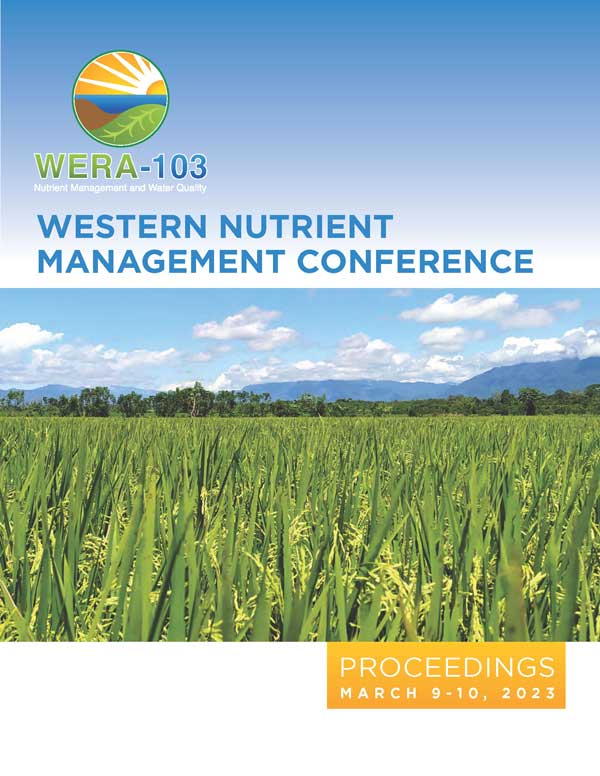Download the Conference Proceedings
Proceedings
Authors
| Filter results3 paper(s) found. |
|---|
1. Nitrogen Management in Small Grains After AlfalfaSmall grains are commonly grown following alfalfa in Utah and the Intermountain West, especially during drought years as small grains require less irrigation than corn. Several studies across the country have shown that corn following alfalfa rarely needs N fertilizer, yet relatively few have evaluated the N needs of small grains. Furthermore, research on the N needs of small grains grown as forage vs. grain are even more sparse. The objectives of this research are to quantify the... C. Pound, M. Yost, E. Creech, G. Cardon, K. Russell, D. Despain, J. Gale, K. Heaton, B. Kitchen, M. Pace, S. Price, C. Reid, M. Palmer, M. Nelson |
2. Performance of Public and Private Fertilizer Recommendations for Corn, Alfalfa, and Small GrainsThere are many sources that growers utilize to determine fertilizer needs for crops such as private and public labs, crop advisors, and fertilizer dealers. In many cases, these sources provide recommendations for a specific crop that can vary greatly, and the resulting fertilizer and application rates recommended can lead to large differences in costs for the grower. Evaluating the effectiveness and economics of current fertilizer guidelines and recommendations will help growers to make better-informed... M. Yost, M. Baker, J. Gale, E. Creech, G. Cardon |
3. Evaluating Zinc Requirements of Corn, Small Grains, and AlfalfaMany growers and crop advisors in the Intermountain west have recently reported Zn deficiencies in major cereal and forage crops. Further, many common fertilizer blends now include Zn. Most Zn fertilizer guidelines indicate that 5-10 lbs of Zn per acre should be applied when critical soil test Zn levels are less than about 0.8 ppm Zn. These guidelines in Utah and many other states in the region were developed decades ago and need to be reassessed. Therefore, we established Zn response and rate... M. Yost, M. Baker, J. Gale, G. Cardon, E. Creech |
